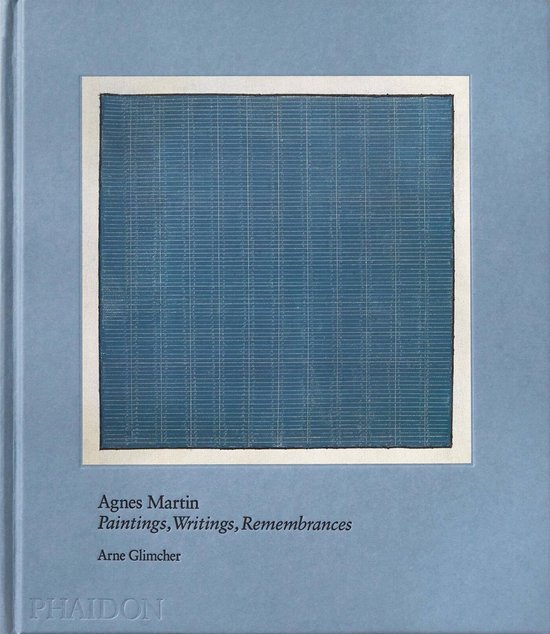
Drawing the Line
Demonstrates that the rapidly evolving creative processes and pictorial solutions Martin developed between 1940 and 1967 define all her subsequent art. This title offers descriptions of the networks of art, artists, and information that moved between New Mexico and the creative centers of New York and California in the postwar period.
“Christina Rosenberger deftly orients Agnes Martin’s ‘inspiration’ and facture toward an industrious past. Whilst dignifying Martin’s desire to shield her audience from her more developmental and exploratory early career, Rosenberger maps a trajectory—fueled by ambition, erudition, and talent—toward the much-celebrated grid paintings of the 1960s. For the first time, Martin’s surviving corpus of early work can be considered within the context of the various artistic communities she metabolized. Meticulous research and a genuine desire to ‘see’ has become Rosenberger’s hallmark.”—Rachel Barker, Modern and Contemporary Paintings Conservator, Tate
“Biographical readings of Agnes Martin’s work abound, but scholarship that focuses instead on close art historical analysis of its form and facture has been lacking. Drawing the Line reorients the reader to her art, in particular the early work of 1940 to 1967. In this important new book, Christina Rosenberger argues that the creative solutions and artistic relationships Martin developed in this period shape all of her later work, including the nonobjective grid paintings for which she is most renowned.”—Michele Marincola, Sherman Fairchild Distinguished Professor of Conservation, Institute of Fine Arts, New York University
“As the art of Agnes Martin assumes ever-greater importance, Christina Rosenberger’s Drawing the Line arrives to provide a vividly empathetic picture of the complete artist. With graceful style and acute analytical intelligence, she makes Martin’s formative work crucial and compelling for any understanding of the artist.”—Thomas E. Crow, Institute of Fine Arts, New York University
Agnes Martin's (1912-2004) celebrated grid paintings are widely acknowledged as a touchstone of postwar American art and have influenced many contemporary artists. Martin's formative years, however, have been largely overlooked. In this revelatory study of Martin's early artistic production, Christina Bryan Rosenberger demonstrates that the rapidly evolving creative processes and pictorial solutions Martin developed between 1940 and 1967 define all her subsequent art. Beginning with Martin's initiation into artistic language at the University of New Mexico and concluding with the reception of her grid paintings in New York in the early 1960s, Rosenberger offers vivid descriptions of the networks of art, artists, and information that moved between New Mexico and the creative centers of New York and California in the postwar period. She also documents Martin's exchanges with artists including Ellsworth Kelly, Barnett Newman, Georgia O'Keeffe, Ad Reinhardt and Mark Rothko, among others. Rosenberger uses original analysis of Martin's art, as well as a rich array of archival materials, to situate Martin's art within the context of a dynamic historical moment. With a lively, innovative approach informed by art history and conservation, this fluidly written book makes a substantial contribution to the history of postwar American art.
“Christina Rosenberger deftly orients Agnes Martin’s ‘inspiration’ and facture toward an industrious past. Whilst dignifying Martin’s desire to shield her audience from her more developmental and exploratory early career, Rosenberger maps a trajectory—fueled by ambition, erudition, and talent—toward the much-celebrated grid paintings of the 1960s. For the first time, Martin’s surviving corpus of early work can be considered within the context of the various artistic communities she metabolized. Meticulous research and a genuine desire to ‘see’ has become Rosenberger’s hallmark.”—Rachel Barker, Modern and Contemporary Paintings Conservator, Tate
“Biographical readings of Agnes Martin’s work abound, but scholarship that focuses instead on close art historical analysis of its form and facture has been lacking. Drawing the Line reorients the reader to her art, in particular the early work of 1940 to 1967. In this important new book, Christina Rosenberger argues that the creative solutions and artistic relationships Martin developed in this period shape all of her later work, including the nonobjective grid paintings for which she is most renowned.”—Michele Marincola, Sherman Fairchild Distinguished Professor of Conservation, Institute of Fine Arts, New York University
“As the art of Agnes Martin assumes ever-greater importance, Christina Rosenberger’s Drawing the Line arrives to provide a vividly empathetic picture of the complete artist. With graceful style and acute analytical intelligence, she makes Martin’s formative work crucial and compelling for any understanding of the artist.”—Thomas E. Crow, Institute of Fine Arts, New York University
Agnes Martin's (1912-2004) celebrated grid paintings are widely acknowledged as a touchstone of postwar American art and have influenced many contemporary artists. Martin's formative years, however, have been largely overlooked. In this revelatory study of Martin's early artistic production, Christina Bryan Rosenberger demonstrates that the rapidly evolving creative processes and pictorial solutions Martin developed between 1940 and 1967 define all her subsequent art. Beginning with Martin's initiation into artistic language at the University of New Mexico and concluding with the reception of her grid paintings in New York in the early 1960s, Rosenberger offers vivid descriptions of the networks of art, artists, and information that moved between New Mexico and the creative centers of New York and California in the postwar period. She also documents Martin's exchanges with artists including Ellsworth Kelly, Barnett Newman, Georgia O'Keeffe, Ad Reinhardt and Mark Rothko, among others. Rosenberger uses original analysis of Martin's art, as well as a rich array of archival materials, to situate Martin's art within the context of a dynamic historical moment. With a lively, innovative approach informed by art history and conservation, this fluidly written book makes a substantial contribution to the history of postwar American art.
| Auteur | | Christina Bryan Rosenberger |
| Taal | | Engels |
| Type | | Hardcover |
| Categorie | | Kunst & Fotografie |



